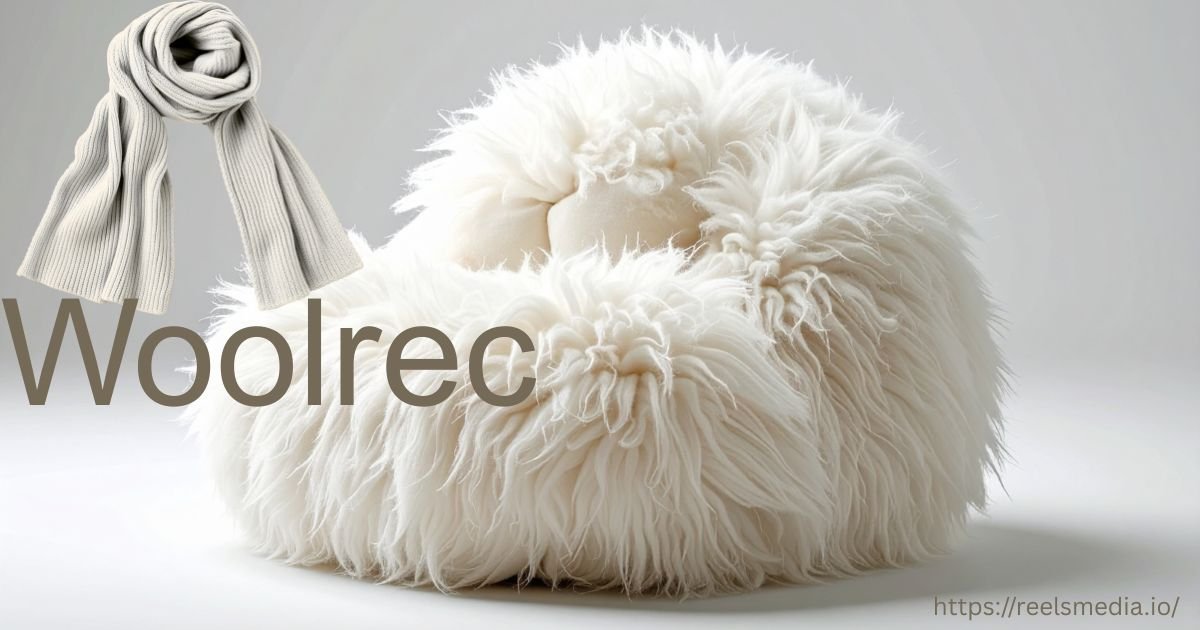The textile industry has long struggled with waste, pollution, and environmental degradation, but Woolrec brings new hope. This eco-friendly initiative revolutionizes textile production through the power of wool and sustainability. Supporting local farmers, encouraging a circular economy, and promoting responsible fashion, Woolrec inspires people to think about quality, style, and the planet together.
The Problem: Textile Waste and Environmental Impact
Every year, millions of tons of clothes, fabrics, and natural fibers end up in landfills, damaging the environment and wasting resources. Fast fashion, synthetic materials, and chemical dyes worsen the problem by increasing carbon emissions and polluting waterways. I have seen firsthand how wool recycling through Woolrec reduces this waste and builds eco-conscious consumer behavior that values recycling and reuse.
Woolrec’s Sustainable Mission
The heart of Woolrec lies in sustainability, transparency, and renewable resources. By partnering with farmers, manufacturers, and educators, it creates eco-friendly alternatives and ensures responsible production. Through education and innovation, Woolrec proves that discarded materials can be transformed into useful, beautiful products, driving sustainable growth and promoting a greener economy worldwide.
You Might Also Like: Brownsburg Schoology
How the Woolrec Process Works
The Woolrec process begins with collection from homes, factories, and stores, where old wool is carefully sorted by color, texture, and quality. In pre-processing, buttons, zippers, and labels are removed before washing, cleaning, and fiber recovery take place. Recovered fibers are then blended with virgin wool, spun, and finished to create durable, soft, and high-quality textiles ready for fashion, home, and industrial applications.
Environmental and Economic Benefits
Woolrec brings major environmental benefits, cutting carbon emissions, saving water, and reducing landfill waste. It promotes circular fashion and eco-conscious design while creating jobs in sorting, collection, and manufacturing. Supporting local economies and artisans, it strengthens the connection between sustainability and economic opportunity, proving that being green can also mean being profitable.
Challenges and Solutions
The journey isn’t without obstacles. Short fibers, polyester blends, and supply inconsistencies can affect recycled fabric quality. Woolrec solves these issues by mixing virgin and recycled fibers, improving sorting accuracy, and maintaining certifications like GRS and RCS. As someone who has seen designers adopt these standards, I believe education, incentives, and innovation are the keys to lasting sustainable transformation.
You Might Also Like: Soutaipasu
Applications of Recycled Wool
The use of recycled wool extends beyond fashion. It’s found in clothing, rugs, jackets, soundproof panels, and even car interiors. The Woolrec supply chain — from collectors and sorters to mills and brands — ensures that used wool becomes new textiles with strength, softness, and beauty intact. These eco-friendly products redefine modern design while protecting our planet.
Testing and Quality Standards
Woolrec maintains high standards through testing for fiber strength, wear resistance, color stability, and shrinkage control. Certifications such as Global Recycled Standard (GRS) and Recycled Claim Standard (RCS) guarantee product authenticity and sustainability. Design for recycling ensures that fabrics use single fibers, easy trims, and compatible dyes, making the entire system efficient and circular.
Cost, Pricing, and Consumer Role
The cost of recycled wool depends on sorting, production scale, and fiber blending. Despite these variables, Woolrec helps save money by minimizing dyeing and reducing virgin wool usage. Consumers play a vital role by washing less, repairing, or donating their old wool garments, contributing directly to the environmental balance and sustainable fashion movement.
Creative and Home Uses of Recycled Wool
Working with recycled textiles, I’ve seen old wool sweaters become mittens, pillows, or felted rugs. Wool scraps serve as biodegradable mulch in gardens or as decorative accessories in homes. From activewear to home décor, the range of sustainable wool products showcases how responsible production meets creativity while reducing the ecological footprint.
How to Identify and Care for Sustainable Wool
To identify authentic sustainable wool products, look for GOTS or OEKO-TEX certifications and check fiber texture and sourcing transparency. Proper care keeps items beautiful longer: hand wash in cool water, use mild detergent, air dry flat, and store in breathable containers away from moisture. These small habits keep wool soft and reduce waste.
The Future of Woolrec and Circular Fashion
The future of sustainable fashion through Woolrec is inspiring. Designers, consumers, and manufacturers are embracing circular fashion, merging style with responsibility. With increasing awareness, recycling wool will soon be a global standard, making eco-friendly textiles and ethical sourcing the foundation of modern sustainable fashion.
Conclusion
Woolrec leads the way toward a sustainable textile future, reducing waste, conserving resources, and uplifting local economies. In both fashion and interior design, adopting Woolrec practices strengthens brand reputation and supports the environment. Every recycled garment is a step toward innovation, ethics, and a cleaner, greener world built on collective responsibility.
FAQs
What is Woolrec?
Woolrec is the process of recycling wool, where old wool is collected and repurposed into new sustainable products — something I’ve personally seen transform the textile industry.
Does recycled wool stay warm?
Yes, recycled wool maintains its warmth, softness, and comfort, performing like new wool in quality and wearability.
Can recycled wool be dyed?
Yes. Recycled wool absorbs dyes beautifully, though color sorting in Woolrec often makes extra dyeing unnecessary.
Is recycled wool biodegradable?
Absolutely. It’s a natural fiber that decomposes without leaving harmful residue, protecting the environment.
How can I know if wool is recycled?
Always check for labels such as GRS or RCS, which confirm recycled authenticity and ethical production.
What products can be made from recycled wool?
Recycled wool can be used in clothing, blankets, rugs, automotive interiors, and acoustic panels.
Why is Woolrec important?
Because it reduces textile waste, saves resources, and supports eco-friendly industries, driving sustainable change globally.
